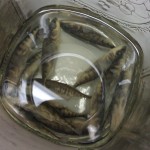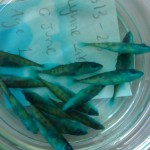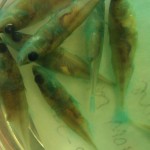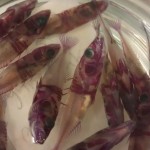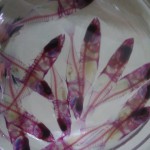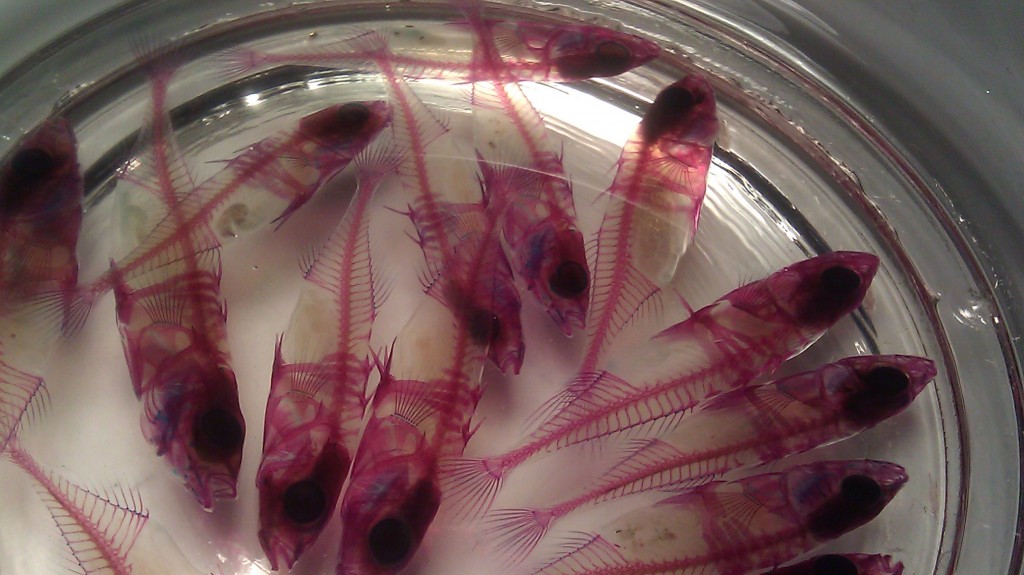Investigating Human-Induced Evolution: Is a shift in ecotype associated with greater variability?
After spending the past three weeks in various solutions (some rather toxic), sixty of the fish that we collected in Alaska this summer have undergone somewhat of a radical transformation
These fish, chosen from two different lakes and age groups (lakes Lynne and Willow; ages one and two years), now have red bone, blue cartilage, and clear muscle and skin tissue, which will hopefully facilitate the measurement of several of their trophic traits.
The population of interest here is the Lynne one, which in recent years has increased in average body size and shifted its feeding behavior to resemble that of the benthic ecotype (e.g. the Willow Lake population). Because we suspect that the increase in body size is a phenotypically plastic response to an increase in productivity of the lake (a change not previously experienced), it would thus follow that trophic traits useful for feeding at large sizes have been hidden from natural selection in this population starting thousands of years ago around the time the lake was colonized. Hence, by measuring the trophic traits of individuals from each of these populations, we can infer how trophic morphology and feeding at a large body size (benthic feeding in this case) have evolved under relaxed selection. We expect that since trophic traits in the Lynne population have been selected only at smaller body sizes for thousands of years (meaning that benthic trophic traits have only recently been exposed to selection, as opposed to thousands of years in Willow Lake), there will be higher variability of traits among the individuals of this previously behaviorally-limnetic population.
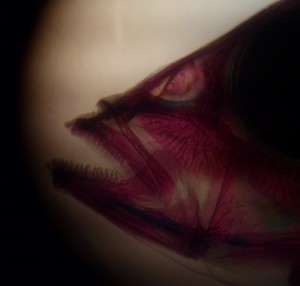
Now that the clearing and staining process is complete, I look forward to learning about stickleback morphology in greater detail and the techniques to go about measuring the traits of interest at the Wund Lab at TCNJ. I imagine this will involve taking pictures of the specimens under the dissecting scope similar to the one on the left, except for of much better quality!
